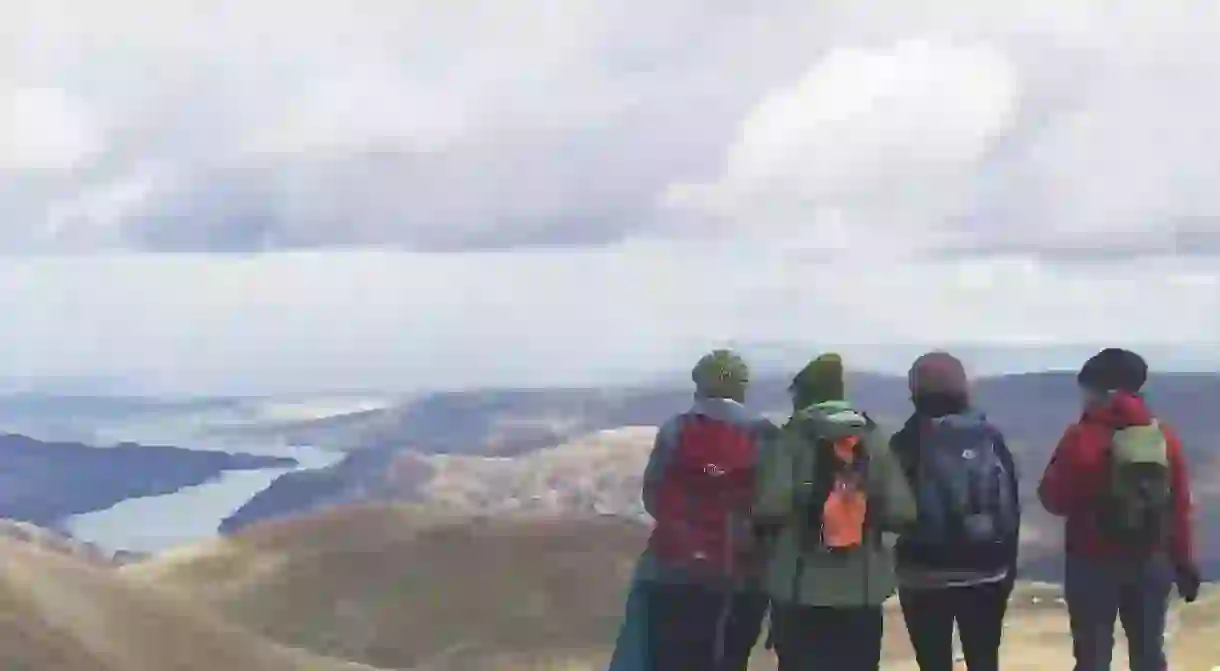How to Explore the Lake District's Famous Wainwright Routes

For anyone who regularly hikes in the Lake District, Alfred Wainwright is immortalised in the books that they carry and the routes that they walk. The unofficial patron saint of the Lakes, Wainwright is responsible for the iconic seven volume Pictorial Guide to the Lakeland Fells, a compendium of illustrated walking guides which is regarded by many as the ultimate guide to the Lake District’s hills and mountains. Planning a trip to the Lakes? Here’s a comprehensive guide to the Wainwright Routes.

Alfred Wainwright was born in Blackburn in 1907 and didn’t actually visit the Lake District until he was 23, when he took a walking trip with his cousin. Immediately falling in love with the area, he spent the next 10 years visiting the Lakes until finally making the move to Kendal with his wife in 1941. He sadly passed away in 1991; his ashes were scattered on Haystacks, his favourite mountain, and there is a memorial to him in the church at Buttermere.
During his visits, and particularly when he relocated to the Lakes, Wainwright would walk the fells on his own, recording his routes and making sketches of the landscapes. In 1952, he started researching and working on the Pictorial Guide to the Lakeland Fells, a seven-volume collection that detailed the 214 largest hills and mountains in the National Park.
The books are unusual in that they were printed using Wainwright’s original pen and ink manuscripts. Rather than using a typical typeface, his own handwriting features throughout the seven volumes, alongside hand-drawn illustrations, diagrams and maps. Since the first volume was published in 1955, the books have been almost continuously in print and have sold over two million copies. It is rare to find a regular Lake District walker who doesn’t own and love Wainwright’s books.

Walking the Wainwrights is a challenge taken on by many local people, as well as keen walkers from all over the world. As of 2013, 674 had completed the challenge, reaching the top of every single fell that Wainwright details in his guides. The official Wainwright Society keeps a register of everyone who ‘bags’ the 214 fells, awarding certificates to every person who completes the challenge.
Of course, to enjoy Wainwright’s walks you don’t have to complete every single peak. The books are divided up into regions of the Lake District – the first volume detailing the Eastern Fells and the last focusing on the Western Fells – with each guide containing a chapter per fell. The chapters typically contain a map of the fell, innovative three-dimensional drawings of the ascents, detailing descriptions of the views from the summits, and ridge routes to connect to other fells. Each book begins with an unusual dedication (book four, for example, is dedicated to the sheep of Lakeland) and there is one self-portrait of Wainwright himself to discover in each volume.
To begin to experience the Wainwrights, you must first purchase your own copy of the seven volumes and get to grips with the author’s unusual style. A far cry from typical walking guides, following Wainwright’s walks is a fully immersive experience as you keep your eye out for natural landmarks that he depicts in illustrations, or follow a detailed sketched map up a mountain. The detailed imagery throughout the books actually makes it easier to follow the route as you are aware of what to look out for along the way.

If you’re planning on embarking on your first Wainwright walk, why not start with Orrest Head, the hill on the eastern shore of Windermere that first attracted the walker and author to the Lakes. This was the fell that Wainwright walked with his cousin that sealed his love for the National Park. Although the walk is not part of the original Pictorial Guide and does not count as one of the 214 fells, it has a chapter in The Outlying Fells of Lakeland, a later book that detailed walks rather than single fells in each of its chapters. Wainwright himself described the fell as ‘our first ascent in Lakeland, our first sight of mountains in tumultuous array across glittering waters, our awakening to beauty’.
Want to discover more of the Lake District? Read our 24 Hour Guide













